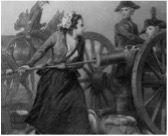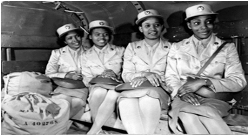Women's Role in War
- Filed under "education"
- Published Tuesday, December 28, 2021
- « back to articles

After the Japanese attack on Pearl Harbor in 1941, the U.S. government pressured manufacturers to increase production of war goods. To help boost worker morale, companies like General Motors produced propaganda posters to demonstrate management’s “partnership” with workers.
Graphic artist J. Howard Miller created the now?famous “We Can Do It” poster for Westinghouse Electric with the same intent. Still, it wasn’t until 1980 that the “We Can Do It” poster gained popularity because of the strong young woman pictured, who came to be known as Rosie the Riveter. Rosie became iconic for representing the feminist movement, used by political campaigns and women’s advocacy networks worldwide – far from the poster’s original purpose.

Though Rosie didn’t represent female soldiers, her connection became linked to military women—today the fastest-growing population among both active service and veterans. Women currently make up 16% of active military and 19% of the officer corps serving our country.
Women have had roles in non?combat positions since the American Revolution. In 1948, Congress passed the Women’s Armed Services Integration Act, giving women permanent status and access to veterans’ benefits. But they still weren’t able to serve in combat.

Fort Des Moines on the city’s south side opened the first Women’s Army Auxiliary Corps (WAAC), later renamed the Women’s Army Corps (WAC), in 1942. The first facility in the nation to train Black officers during World War I, Fort Des Moines trained 65,000 women soldiers and commissioned the first female officers for non?combat positions, including 118 Black female officers and over 3,600 Black female soldiers.
In 2013, Secretary of Defense Leon Panetta removed the military’s ban on women serving in combat, opening the door to a multitude of opportunities, although most excluded women due to grueling test standards, tactical and “social” concerns, and stereotypes about women’s effectiveness. Several years passed before women could serve in combat positions in all military branches.

Recently, ISU student and Ankeny native Taylor Patterson became the first female infantry soldier enlisted in the Iowa National Guard, only 5 years after the United States Army opened combat positions to women. Patterson completed the 22?week infantry training, which included close combat and tactical training, noting she proved that women could complete the same training as men.
Women in the military, particularly the 16,000 women veterans in Iowa, need more than our thanks on Veterans’ Day. Because of their unique circumstances and specialized needs, the support we now have in place needs our attention. Read Women Veterans: The Journey Ahead, a 2018 report that outlines how we can start.